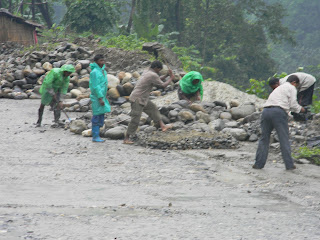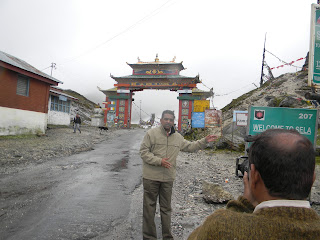In the backdrop of the current faceoff between India and China in Ladakh, I thought it would be useful to recall my travel to the Eastern front--to the Kameng Sector--to commemorate half a century of the 1962 war. So here it: Still pictures, a half hour documentary, several articles. Its a longish post. Take a look for whatever it is worth.
September 2012 was a busy, educative and humbling experience for me.
In trying to piece together the story of the 1962 border war between India and China, half a century later was not easy.
In the end however, all the trouble--physical and mental--has been worth it.
In the process, several discoveries were made: The biggest was that most of contents of the over-hyped Henderson Brookes Report on the military aspects of India's biggest and only defeat since 1947 was already in public domain courtesy the Official History of the 1962 war co-authored by Col (retd) Anil Athale. Col Athale had that report in his physical possession for two years! He has quoted extensively from that report! So much for secrecy, scoops and claims about the HB Report.
My travel to Tawang was a different experience altogether. Missed deadlines, half done work, shoddy planning on the infrastructure front was really saddening.
Another disheartening fact was the Indian Army's blockade of information and access to areas along the China border. Half a century later, the Army should have been proudly talking about the changes it has brought in terms of both preparedness as well as mindsets. It would have been appropriate for the Army to showcase the difference between 1962 and now. But the Brass told journalists that areas under Eastern Command and Eastern Ladakh are out of bounds for them. The logic was: Why up the ante against the Chinese? Still under confident? Afraid of the Chinese? Or pure and simple obduracy?
I have never been able to understand the logic.
Nevertheless, here's the sum total of my small effort to bring the 1962 war back in focus. The links below:
http://www.ndtv.com/video/player/the-big-fight/50-years-after-indo-china-war-is-india-now-better-placed-militarily/251537?hp&video-featured
http://www.lowyinterpreter.org/post/2012/10/22/Remembering-the-India-China-border-war.aspx
(details below)
September 2012 was a busy, educative and humbling experience for me.
In trying to piece together the story of the 1962 border war between India and China, half a century later was not easy.
In the end however, all the trouble--physical and mental--has been worth it.
In the process, several discoveries were made: The biggest was that most of contents of the over-hyped Henderson Brookes Report on the military aspects of India's biggest and only defeat since 1947 was already in public domain courtesy the Official History of the 1962 war co-authored by Col (retd) Anil Athale. Col Athale had that report in his physical possession for two years! He has quoted extensively from that report! So much for secrecy, scoops and claims about the HB Report.
My travel to Tawang was a different experience altogether. Missed deadlines, half done work, shoddy planning on the infrastructure front was really saddening.
Another disheartening fact was the Indian Army's blockade of information and access to areas along the China border. Half a century later, the Army should have been proudly talking about the changes it has brought in terms of both preparedness as well as mindsets. It would have been appropriate for the Army to showcase the difference between 1962 and now. But the Brass told journalists that areas under Eastern Command and Eastern Ladakh are out of bounds for them. The logic was: Why up the ante against the Chinese? Still under confident? Afraid of the Chinese? Or pure and simple obduracy?
I have never been able to understand the logic.
Nevertheless, here's the sum total of my small effort to bring the 1962 war back in focus. The links below:
http://www.ndtv.com/video/player/the-big-fight/50-years-after-indo-china-war-is-india-now-better-placed-militarily/251537?hp&video-featured
http://www.ndtv.com/video/player/ndtv-india-documentary/62-50/251558
http://nitinagokhale.blogspot.in/2012/10/remembering-war-through-pictures.html
http://nitinagokhale.blogspot.in/2012/09/tezpur-to-tawang-pictorial-record.html
http://nitinagokhale.blogspot.in/2012/10/remembering-war-through-pictures.html
http://nitinagokhale.blogspot.in/2012/09/tezpur-to-tawang-pictorial-record.html
and the latest write up.
http://www.lowyinterpreter.org/post/2012/10/22/Remembering-the-India-China-border-war.aspx
(details below)




































No comments:
Post a Comment